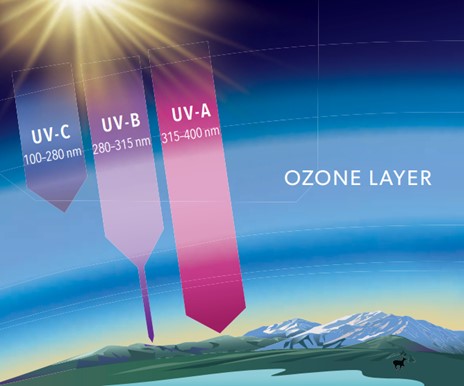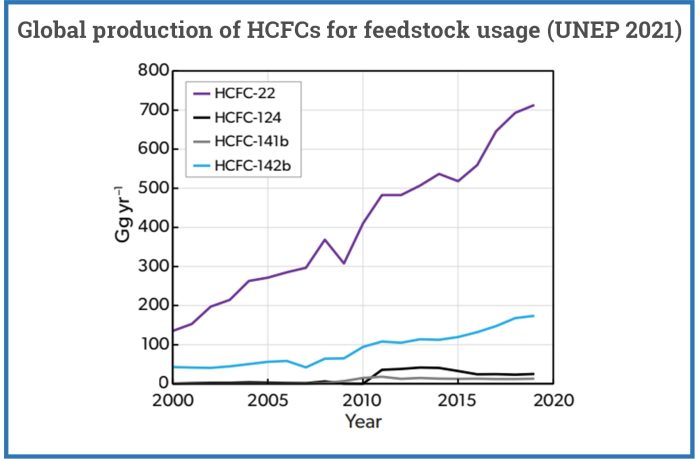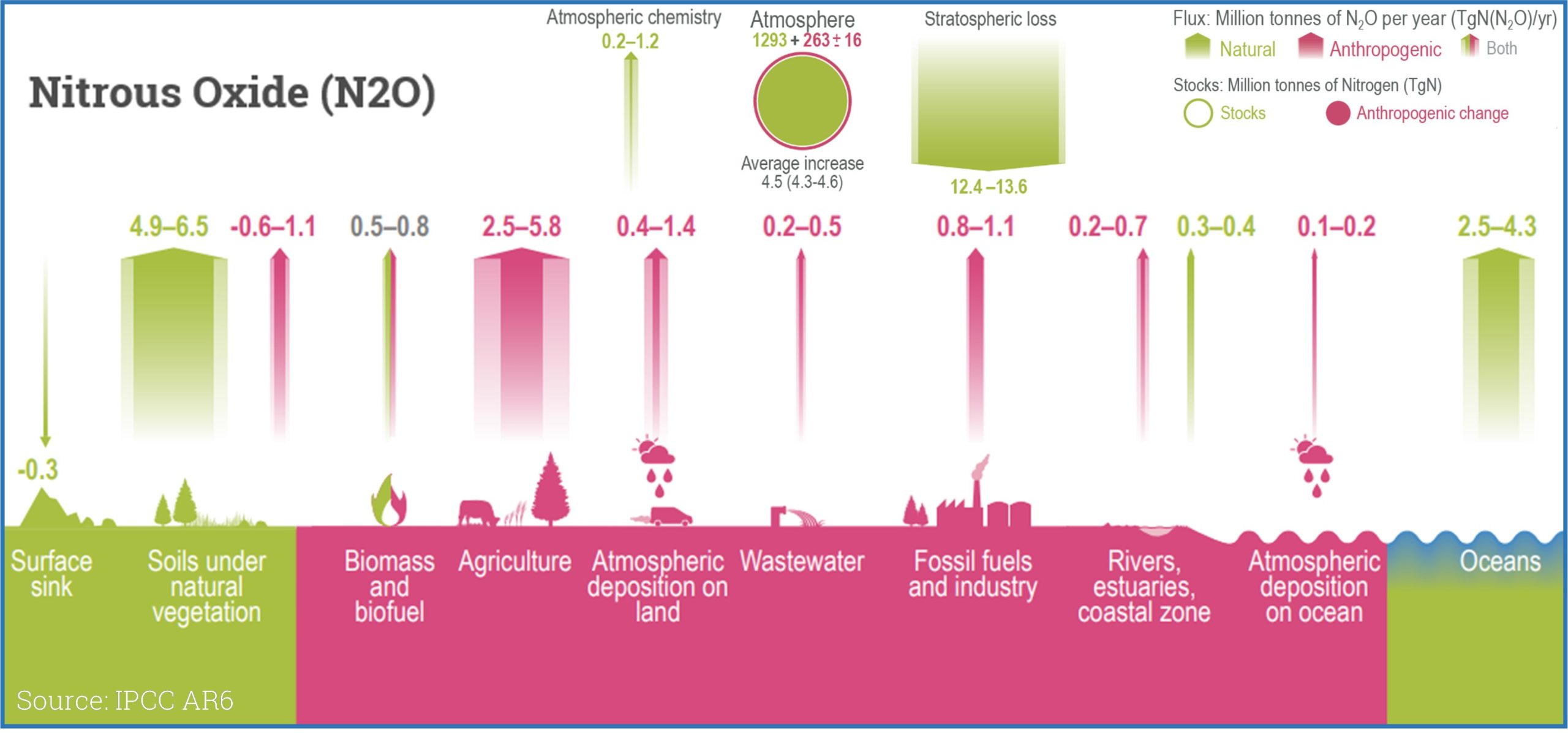World Ozone Day 2023 – the past successes and future challenges to shielding our planet



(c) Chani Goering
For nearly four decades, the Montreal Protocol on Substances that Deplete the Ozone Layer has been protecting human health, safeguarding ecosystems and slowing down climate change.
How? By banning the use of ozone-depleting substances (ODS) and allowing the ozone layer to gradually recover from the damage caused by these man-made chemicals.
But, as we mark the UN’s International Day for the Preservation of the Ozone Layer tomorrow (16 September), we can’t afford to be complacent – the ‘hole’ discovered in the ozone layer above the Antarctic during the 1980s is still there and challenges, both old and new, continue to threaten the recovery of our planet’s invisible shield against ultraviolet (UV) rays.
 The ozone layer is an important part of our atmosphere, absorbing almost all of the sun’s harmful ultraviolet (UV) radiation.
The ozone layer is an important part of our atmosphere, absorbing almost all of the sun’s harmful ultraviolet (UV) radiation.
Long-term exposure to high levels of UV-B, or any exposure to UV-C, is harmful to human health and damaging to most animals, plants and microbes. In short, the ozone layer plays a crucial role in protecting all life on Earth.
In the 1970s, scientists first hypothesised that the ozone molecules (O3) which form the ozone layer could be destroyed by the chlorine from chlorofluorocarbons (CFCs), man-made chemicals which were used in thousands of products around the world, from air-conditioners and refrigerators to aerosol sprays, asthma inhalers and building insulation.
Over the following years, evidence supporting their concerns grew and when scientists discovered a hole in the ozone layer above the Antarctic in the mid-1980s, the international community was spurred into action. The Montreal Protocol was signed in 1987, with the explicit aim of protecting the ozone layer by phasing out ODS.
To this day, the Montreal Protocol is the only United Nations environmental treaty to be ratified by every country in the world and it is defined by a catalogue of successes:
A hole in the ozone layer does still appear above the Antarctic each year, but thanks to the Montreal Protocol it has been slowly improving since the year 2000.
The hole in the ozone layer appears during the Antarctic springtime because extreme cold and strong winds create a polar vortex over the region. This speeds up the mechanism by which the ODS present in the stratosphere destroy ozone. In years where these conditions last longer than average, ozone depletion will also last longer – a potential cause for the unusually large and persistent ozone holes we have seen in the last few years, including in 2023.
This year’s early appearance of the ozone hole (which has now stabilised at around the 1990-2010 average) might also be linked to the 2022 eruption of the Hunga Tonga-Hunga Ha’apai volcano, which injected an unprecedented amount of water vapour into the atmosphere, possibly speeding up the chemical processes that cause ozone depletion.
While the past few years have reminded us that we can’t be complacent about ozone recovery, we need to be clear that they don’t imply that the Montreal Protocol is not working. On the contrary, the ozone holes we have seen in recent years would have been much worse without the Protocol and the ozone layer is still on track to recover.
Over the Antarctic, the ozone layer is expected to recover to its 1980 levels (before the appearance of the ozone hole) by about 2066. In other places, recovery is expected even sooner.
The Montreal Protocol is often hailed as the world’s most successful environmental treaty. It has earned that status through consistently increasing ambition, by accelerating the pace of the ODS phase-out and expanding in scope to address HFCs.
EIA has a long history with the Montreal Protocol and we want to see its legacy of increasing ambition continue, which is why we’re working to make sure it is further strengthened, to ensure both swift ozone recovery and maximum climate benefits.
Below, we discuss some of the major challenges affecting ozone recovery today and, importantly, what EIA plans to do about them.
EIA’s ambitions – strengthening the Montreal Protocol
 • Feedstocks: The term ‘feedstocks’ refers to substances that undergo a chemical transformation during the process of making other chemicals. The production, use and disposal of feedstocks results in harmful emissions, but ODS and HFC production for feedstock use is exempt from Montreal Protocol controls. That’s because it was previously thought that feedstocks only produced insignificant emissions, something a growing body of scientific evidence is proving to be wrong.
• Feedstocks: The term ‘feedstocks’ refers to substances that undergo a chemical transformation during the process of making other chemicals. The production, use and disposal of feedstocks results in harmful emissions, but ODS and HFC production for feedstock use is exempt from Montreal Protocol controls. That’s because it was previously thought that feedstocks only produced insignificant emissions, something a growing body of scientific evidence is proving to be wrong.
Data from the Montreal Protocol’s assessment panels suggest that feedstock emissions totalled about 145 million tonnes of CO2-equivalent in 2019 alone; that’s more than the total annual greenhouse gas emissions of a lot of countries! And since the most widely produced feedstocks are ODS, these emissions are slowing down ozone recovery.
It is therefore imperative that Parties agree measures to reduce industrial emissions from the production and use of feedstocks.
• Banks: The stores of ODS and HFCs contained in existing equipment (fridges, air-conditioning units, etc) are known as ‘banks’. Historically, there has been no obligation under the Protocol for countries to address the substantial emissions being released by banks.
Currently, banks are releasing about 150 million tonnes of CO2-equivalent emissions every year, representing a clear risk to both the climate and the ozone layer. In fact, recent studies have warned that emissions from banks of ozone-destroying CFCs alone could potentially delay Antarctic ozone hole recovery by about six years!
EIA is pushing for a global framework to recover and destroy ODS and HFC banks, which we believe should include a key role for the Montreal Protocol.
• Strengthening MRV+E: Monitoring, reporting, verification and enforcement (MRV+E) are at the core of what has made the Montreal Protocol a success. These are the processes that allow bans to be enforced, illegal trade to be shut down and progress to be tracked.
But with the 2018 revelation that CFC-11 was being illegally produced and used in eastern China (potentially delaying polar ozone recovery by up to three years), the need to strengthen MRV+E processes was thrown into sharp focus.
Fortunately, countries are now discussing how to strengthen the Montreal Protocol, and EIA is continuing to call for a comprehensive review of its MRV+E processes.
EIA’s ambitions – the ‘forgotten’ ODS
• Nitrous oxide (N2O): Nitrous oxide (N2O) is the most significant ODS in the world today. It is also the third most important greenhouse gas, after CO2 and methane. This means that N2O emissions simultaneously undermine both the recovery of the ozone layer, and global efforts to limit warming. Despite this, N2O is not subject to any controls under the Montreal Protocol and it is almost entirely overlooked in countries’ nationally determined contributions (NDCs) under the United Nations Framework Convention on Climate Change’s Paris Agreement.
N2O already contributed 0.1°C to global average warming between 2010-19 and, in terms of ozone depletion, emissions in 2020 alone were equivalent to more than 20 per cent of all CFC emissions in the year they peaked. Left unchecked, N2O emissions could double by 2050, presenting a serious threat to the recovery of the ozone layer.
In the past four decades, anthropogenic (human-caused) N2O emissions have increased by 30 per cent. The largest source of these emissions is agriculture, which accounts for about two-thirds of all human-produced N2O emissions, but other important sources include industry, transport, biomass burning and waste water.
There are a number of options and several potential venues that might be used to tackle N2O emissions, but clearly the Montreal Protocol, as the ozone treaty, will play an important role.
The Montreal Protocol has done much over the past 36 years to secure its crown as the world’s most successful environmental treaty, but while its success deserves to be celebrated, its work is far from done.
The spirit of increasing ambition that has put the recovery of our ozone layer back on track, and has taken action to limit the climate impact of HFCs, now needs to be reinvigorated once more to address the next set of challenges lining up against it.